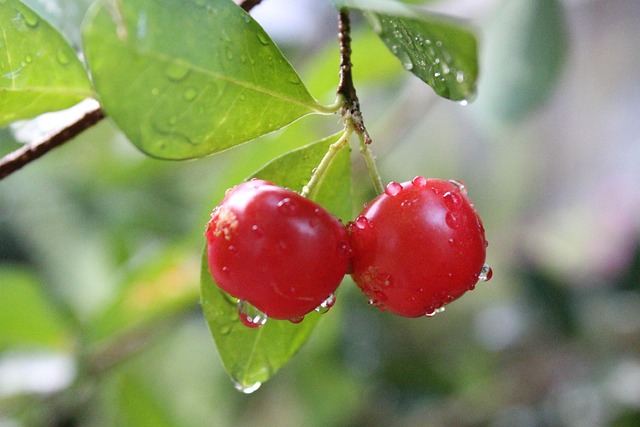Practical Guide to Growing and Caring for Fruit Trees
Growing fruit trees in your garden provides fresh, homegrown produce while creating beautiful landscape features. Success depends on selecting appropriate varieties for your climate, preparing suitable growing conditions, and implementing proper care techniques. From initial planting through harvest management, understanding the fundamental principles of fruit tree cultivation helps ensure healthy growth and abundant yields. Whether you're a beginner gardener or experienced grower, mastering these essential practices will transform your outdoor space into a productive orchard.

Successful fruit tree cultivation begins with understanding your local growing conditions and selecting varieties that thrive in your specific environment. Climate considerations, soil requirements, and ongoing maintenance practices all contribute to establishing a productive home orchard that provides years of fresh fruit.
Choosing Varieties and Rootstock for Your Climate
Selecting appropriate fruit tree varieties requires careful consideration of your local climate zone, chill hours, and growing season length. Different fruit species have varying temperature requirements, with some needing specific winter chill periods to produce fruit properly. Apple trees typically require 400-1000 chill hours below 45°F, while citrus varieties prefer warmer climates with minimal frost exposure. Rootstock selection significantly impacts tree size, disease resistance, and soil adaptation. Dwarfing rootstocks create compact trees suitable for smaller spaces, while standard rootstocks produce full-sized trees with greater yield potential. Research varieties proven successful in your region through local extension services or experienced growers.
Site Selection and Soil Preparation
Proper site selection forms the foundation for healthy fruit tree development. Choose locations receiving at least six to eight hours of direct sunlight daily, with good air circulation to prevent fungal diseases. Avoid low-lying areas where cold air settles or where water accumulates after rainfall. Soil preparation involves testing pH levels, which should range between 6.0-7.0 for most fruit trees. Heavy clay soils require amendments with organic matter and sand to improve drainage, while sandy soils benefit from compost additions to enhance water retention. Create planting areas 3-4 feet wider than the root spread, incorporating aged manure or compost to depths of 12-18 inches.
Planting Techniques and Early Care
Proper planting techniques establish strong root systems and promote vigorous early growth. Dig planting holes twice as wide as the root ball but no deeper than the container or root system height. Position the graft union 2-3 inches above soil level to prevent rootstock sprouting. Backfill with native soil mixed with compost, watering thoroughly to eliminate air pockets. Install support stakes for young trees in windy locations, using soft ties that won’t damage bark. Establish consistent watering schedules during the first growing season, providing deep irrigation weekly rather than frequent shallow watering. Apply 2-3 inch mulch layers around trees, keeping mulch several inches away from trunk bases.
Pruning and Training for Health and Yield
Regular pruning maintains tree health, controls size, and optimizes fruit production. Begin training young trees immediately after planting by selecting 3-4 strong scaffold branches with wide crotch angles. Remove competing central leaders, crossing branches, and weak growth annually during dormant seasons. Mature trees benefit from thinning cuts that improve light penetration and air circulation throughout the canopy. Different training systems suit various space requirements and management preferences. Open center training works well for stone fruits, while central leader systems suit apples and pears. Summer pruning helps control vigorous growth and redirects energy toward fruit development.
Pest, Disease and Harvest Management
Integrated pest management combines preventive practices with targeted treatments to maintain healthy fruit trees. Regular monitoring identifies pest problems early when control measures prove most effective. Common pests include aphids, scale insects, and fruit flies, while diseases like fire blight, brown rot, and powdery mildew affect different species. Encourage beneficial insects through diverse plantings and avoid broad-spectrum pesticides that harm natural predators. Proper sanitation removes fallen fruit and diseased plant material that harbor pests between seasons.
| Tree Type | Average Cost | Maintenance Requirements |
|---|---|---|
| Dwarf Apple | $25-45 | Moderate pruning, regular spraying |
| Standard Cherry | $30-60 | Heavy pruning, bird protection |
| Citrus Trees | $35-75 | Frost protection, consistent watering |
| Peach/Nectarine | $20-40 | Annual pruning, disease monitoring |
| Pear Trees | $25-50 | Fire blight prevention, thinning |
Prices, rates, or cost estimates mentioned in this article are based on the latest available information but may change over time. Independent research is advised before making financial decisions.
Harvest timing significantly impacts fruit quality and storage potential. Most fruits reach peak ripeness when they separate easily from branches with gentle lifting motions. Color development, firmness, and sugar content indicate optimal harvest windows for different varieties. Proper storage techniques extend fresh fruit availability, with some apples keeping for months under proper refrigerated conditions while stone fruits require immediate consumption or processing.




